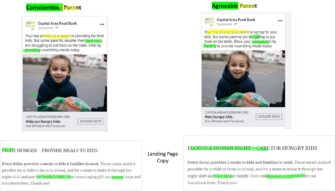Reverse Engineering Your Way to Donor Centricity
Understanding the why of human behavior is best unearthed with data straight from our donors. We call it zero-party, that which is voluntarily and knowingly given, typically via a survey.
Contrary to the opinion of many, surveys are the best way to measure motivation and needs and innate traits that play a large role in human decision making.
But, here’s the rub. While I can only measure and understand donor identity and motivation and personality with survey data I only have the data for a sample.
How do we use survey based insights to target and treat people differently when I don’t have survey data for everyone? This is the million dollar question that gets posed to us all the time.
The answer? Reverse engineering. There is plenty of proxy data available in 2nd party world (e.g. Facebook) or 3rd party world (e.g. all the pure commodity, publicly available data sold by data brokers). The data isn’t perfect, that’s why it’s called proxy. But, it does help build a bridge between the chasm of kick-ass insight from a sample to mass-market application to get beyond the world of one-size fits nobody fundraising.
Let’s raise the bar on donor experience and donor-centricity and require our fundraising live up to what we all know and believe – not everybody is the same, they differ in their “why” and we should segment accordingly.
Here is an example. We did insights work revealing the unique DNA of the client’s donors. We found Parent Identity was a big driver of decision making along with two specific Personality traits, Agreeable and Conscientious.
The Parent Identity is self-explanatory in how we use that to make audience targeting selections in Facebook, for example. Similarly, one can append 3rd party data to a mail list or telemarketing list or a list for door canvassing that lets us make reasonable (not perfect) assumptions about Parent/non-parent status.
We also have deep, rich profiles of the Big Five personality traits. These profiles tell us how to be more effective in connecting with these folks using certain words, images and even writing style. These profiles further tell us how to be more efficient in our targeting by using demographic skews and known Facebook affinities skews.
Descriptive data is about targeting, which only ever yields efficiency. Effectiveness comes from knowing how to talk differently to the Agreeable and Conscientious Parent.
Here are those ads and landing page copy.
Once a person donates via clicking on the Agreeable Parent ad (which was targeted very specifically based on 2nd party, Facebook data) we code that person in the CRM as being an Agreeable Parent.
V-o-i-l-à, we’ve reverse engineered going from sample specific insight to known, proxy, descriptive targeting attributes to message matching audience to a reasonable, assumptive tagging in the CRM. We continue to market and communicate with different messaging and engagement opportunities tied to who they are. This is real donor-centricity at scale.

Kevin



Hi Kevin.
Another interesting post. Could I ask how you went about the
insights work revealing the unique DNA of the client’s donor? Was this a combination of qual and quant?
Jonny, we use a survey to measure Personality(standardized), Motivation(standardized), Identity (bespoke to client’s subsector with lots of validated measures we’ve developed over time), Moral association of charity (e.g. is Charity X considered more of a Care/Harm brand or Fairness/Equity brand) and a few other bits.
We then combine this data that is missing from the CRM (hence need to collect via survey) with the CRM data. We build models to explain giving and identify the Identity (or two) that we can validate – meaning we see causal differences in behavior.
I’ve seen donor surveys that are “thinner” – relying on open-end questions as if folks can self-introspect enough to tell us about their ‘why’ in a direct way (they simply can’t) or surveys that are “heavier” with reams of questions that all seem reasonable on the surface but have no validated scales or theory/evidence behind them. And if you aren’t combining survey data with CRM giving data then neither tells you very much in isolation or worse, tells you the wrong thing.
Happy to chat with you more directly and informally, I know your crew does a lot of creative, I think you’d find the insights to be fascinating and opening up all new creative paths.